many different artists
Henie Onstad Kunstsenter, Bærum
2.6.-2.9.12
forest art - installations in the forest park by Henie Onstad Kunstsenter
The grand Henie Onstad art centre just outside Oslo is always worth a visit. This summer you may even get great art experiences without entering the door. The project ”Secret Garden” invited many artists to present art in the public, almost hidden in a small forest in the centre park area. Walking through this forest you will be surprised, overwhelmed, start looking at the forest differently, and even walk through the forest differently. The thrill of it is that almost nothing of the art is visible when you arrive at the art centre, you need to know that it is there. Thus it really is a secret.
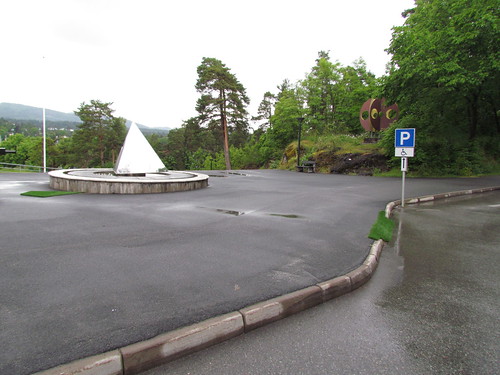
Eline Smith: Grass
The first visible installations are fake grass patches placed on weird places where grass really cannot grow. In this way the absence of grass is underlined, making you think about the qualities of grey versus green areas, i.e. asfalt versus grass. Even if I love a stretch of smooth, freshly layed asfalt, I must admit that the softness of grass is to prefer for bare feet (as long as it is not wet or filled with ticks.)

Lise Wulff: Sign of Life (Pulse)
On the way down to the seafront, there is white sand poured onto the steps. From below you almost cannot see it, from the side it makes some stripy oval, but from above it makes a perfect circular form. Or it probably did. It is constantly changed due to the wind and rain, and maybe even visitors unaware of stepping on an art installation. The form will probably be quite different from the opening to the ending of the exhibition. I am curious whether it will be visible at all, or if it will be present hidden as sand spread throughout the area.
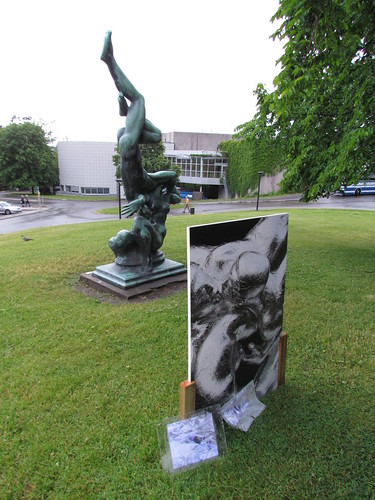
Anne Marthe Dyvi: Draping
The next art piece is not there anymore. The shape is there for sure, but what changed this sculpture to a completely another sculpture was only there for a short period. The sculpture "Zeus og Io" by Kai Nielsen from 1918-20 was covered in aluminium foil for some days. During this time nothing of the original was visible, even though all its forms were there. The artist had made a new sculpture totally dependent on the former one. Now all that is left is a description and a photo, assuming what happened. Only the old art remains while the new has disappeared. Or has it? As long as it has existed it remains in the memory, and this way it is still there.
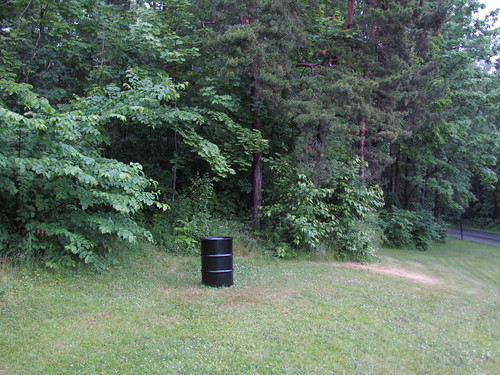
Serina Erfjord & Magnus Oledal: But Listen
The description states: "A kinetic sculpture consisting of a black oil barrel fillet with dark water. At intervals, there is a movement in the water." When I was there the barrel was closed with a lid, probably because of the rainy weather. I could not see the movements in the water at all, only some movement of falling raindrops on the lid. I have to believe the description of what goes on on the inside, almost like in the installations by Bettina Buck. But here this was probably not the original idea. One thing is when the changes by weather are intended as shown above in "Sign of Life (Pulse)", but here the installation need to be protected from the weather. Would it not fit better indoor then?
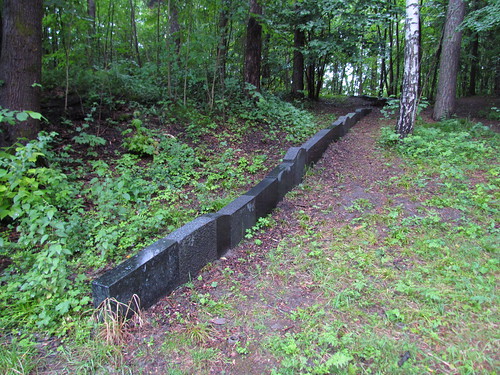
Sverre Hoel: Fragmenter
A line of gravestone fragments form a wall or a guiding line through the forest. Or maybe they are rather portruding from the ground, like zombies digging their way up? The text has been polished off the stones. What are really there are just some stone rectangles, why are they still kind of creepy? They have no purpose as death monuments, still this is how I react to them. For a Norwegian it is strange seeing these stones in the nature, not in a park-like area. But for an Estonian and probably others it is perfectly normal to see graves in forest-like areas. I am not sure whether the line leads into or out of the forest.
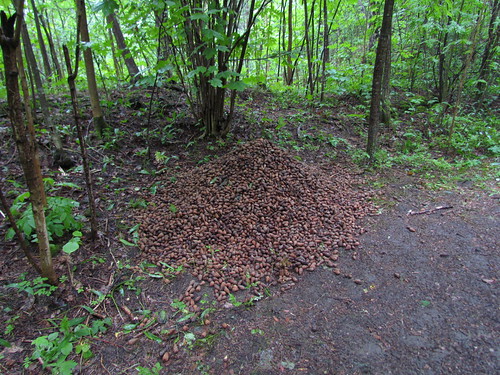
Lise Wulff: Sign of Life (Breath)
Further into the fores there is a heap of pine cones. Just an ordinary heap of pine cones, that I would probably not have notices at all, were it not for the sound that emerges from the heap. So easy and so impressive.

Christine Istad & Gjertrud Hals: Celestial Bed
A bed frame is hanging from the trees, this is actually a 1910 bed belonging to the opera singer Kirsten Flagstad. On the strings holding it beard lichen are glued on. Does it matter who has slept on the bed frame? You can climb on to it and try. I really do not believe you would notice any physical difference if you were told it rather belonged to someone else, or if you did not know. It would still be unconfortable without the mattress. Then again, maybe you would still think differently knowing about the owner. But she did not sleep in these surroundings, did she? What surrounds the bed probably leaves a stronger impression than the bed itself. And what about the lichen? This is a slow growing organism, very sensible to air pollution. Even if it is torn away from its habitat and fastened to strings it can survive. But will it survive when the exhibition is over?

Rus Mesic: Here, There, Nowhere
Evidence that something happened here, but I do not know what. Artist and co-curator Rus Mesic held a performance here in 10 minutes. All that is left are broken, rotting oranges.
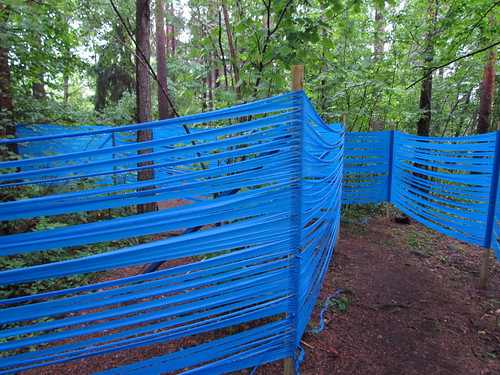
Marisa Ferreira: Forest Flow
At the top of the hill the path leads into a blue border, a maze or a gate. There is no other option than to walk through it. The artist is in full control of where we walk. Until now it has been my curiosity that led me from art piece to art piece. Now I am forced to move on through the portal or turn back to where I came from. Of course I choose to move on through this construction, and I emerge on the other side, safe, and with an impression richer. Sometimes you just have to give in and let the art lead you.
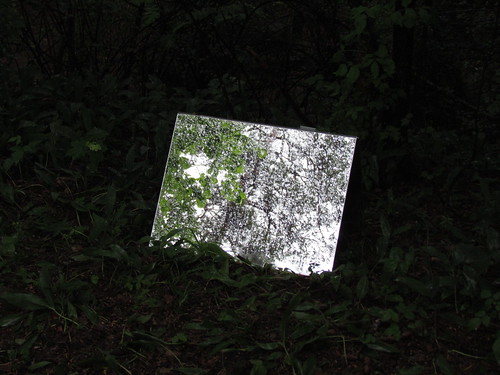
Christine Balsløw: Tent
Several mirrors are placed on the ground, reflecting the sky and the treetops. By looking down I get the same viewpoint as small animals have. If the mirrors had been really large or if I had not been aware of the ground around it, this could cause serious vertigo, not knowing what is up and down. I would have to believe other senses than my sight.
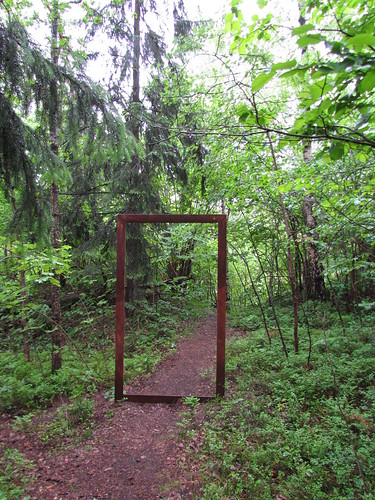
Vigdis Storsveen: Hello and Goodbye
A doorframe stands across the path, it is up to you whether to enter or not. And you decide whether you are entering or exiting something. What exactly are you entering/exiting? It is the same forest on both sides. And then it is not, the same plants are on both sides, but they are not identical and have different locations. Wherever this portal is placed it marks a border between two areas. How much different would it have been if it was moved let's say a meter this or that way?
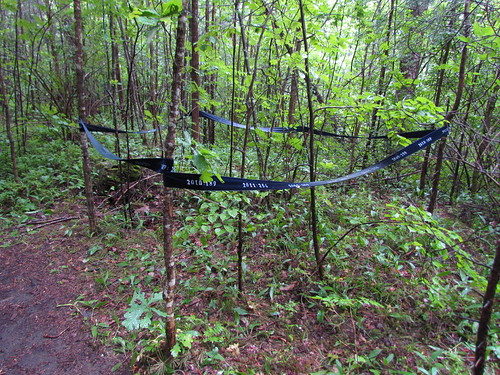
Line Schjølberg: Blue Velvet
Velvet ribbons with numbers printed on mark an area. The numbers are statistics of rape cases during the last years in Oslo. The forest suddenly changes from idyll to horror. A forest can be a great place for recreation, but it can also be an area of fear. The ribbons encircle a small area. Is that the dangerous area, or is that rather the safe area, while I am outside, in the dangerous area?
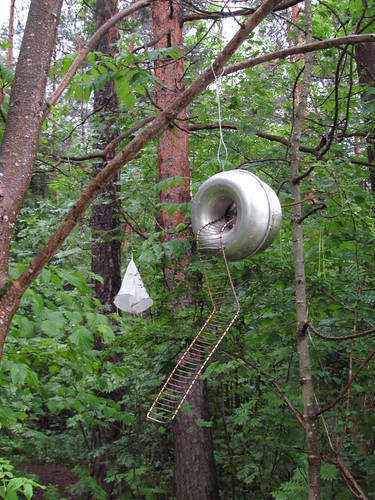
Kari Anne Helleberg Bahri: The Secrets of a Garden...
Wonderful houses for birds are created by kitchen utensils. Will birds actually use these installations hanging in the treetops as their homes? There are several of them more or less hidden, you need to look around to find all of them, and you do not know if you really saw them all.
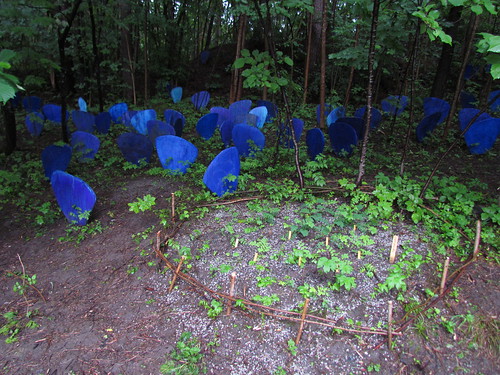
F3: Reverdin's Blue
Giant blue butterflies rest in the forest. These are supposed to be the butterfly species Reverdin's Blue, threatened to be extinct as the plant it is dependent on disappears. Some of these wild licorice plants have been planted here, maybe in the hope that some real butterflies will find their home here.